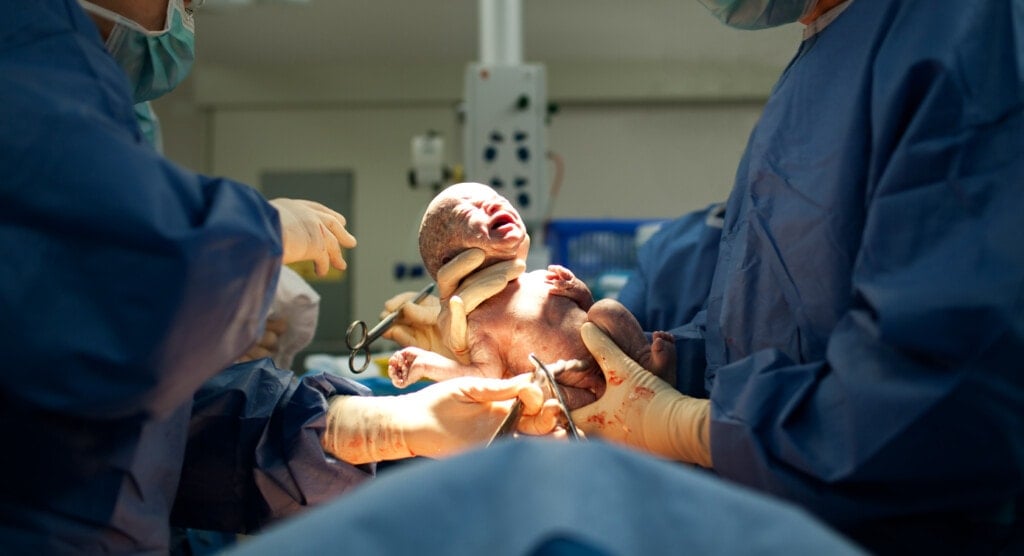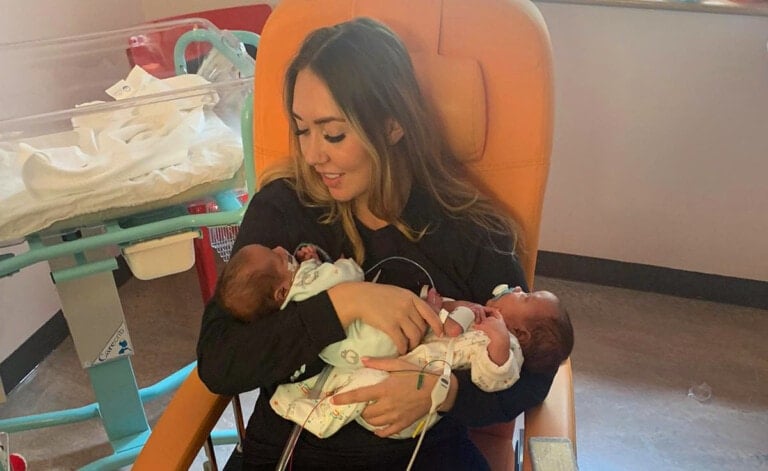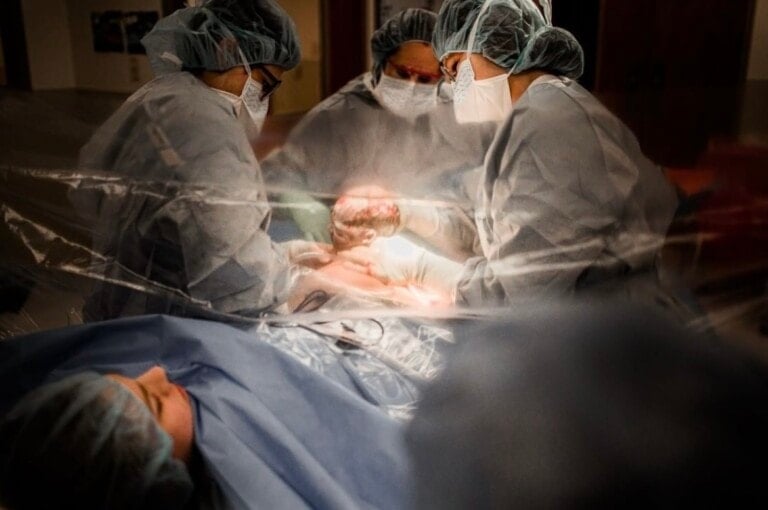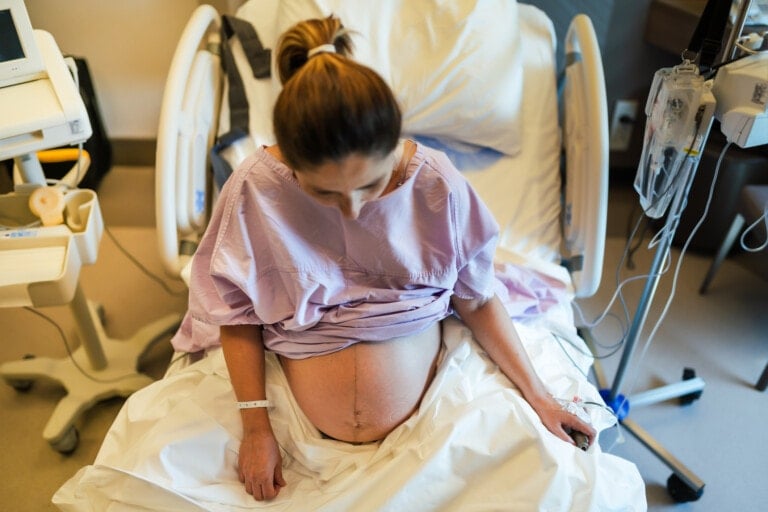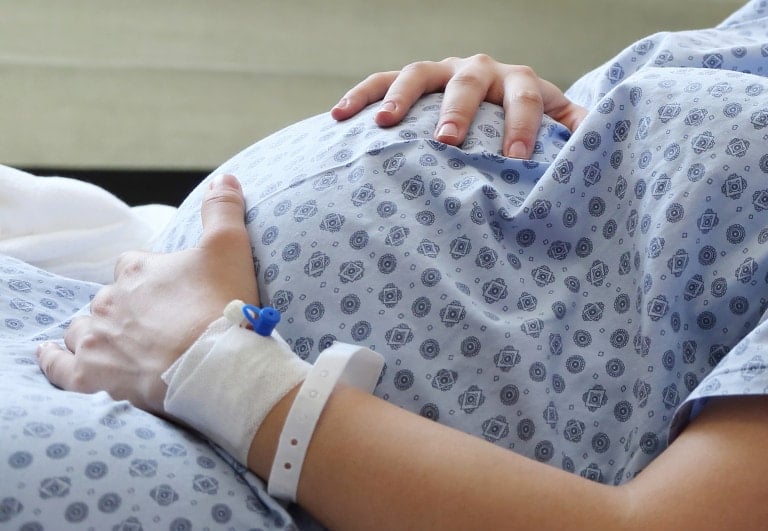When I became pregnant with my first child 15 years ago, there wasn’t much talk about birth plans or gender reveals, or many of the things that moms-to-be do now. But there was one thing that I was adamant about; I did not want to have a C-section. The thought of it terrified me. I don’t know what I was so scared of, but I was hell-bent on delivering vaginally. And I did.
I was induced, which some people told me leads to an emergency C-section more often than labor without intervention. Sure, that made me a bit nervous. I was 11 days overdue, and my baby wasn’t coming on his own. Even after a long induction process and pushing for four hours. Was it great? No. But it wasn’t horrible, either. I didn’t know any better, so I assumed it was like any other birth experience.
I Had Another Baby Two Years Later
Two years and one month later, I was ready to have my second child. From the get-go, I told my doctor, “No C-section.” He assured me he knew what I wanted and that we would all do our best to have things go as I wanted them to. My first baby was 8 pounds, 4 ounces, a decent hunk of love, but not huge. At my final ultrasound, the tech estimated that my new baby would be about the same size as the first. Which I knew was a reasonably easy delivery.
Again, it was an induction, but nothing too crazy. I had an issue with my epidural that doctors handled, and we were good to go. This baby didn’t want to come out, though. He was happy inside and had gotten himself into a comfortable position, but his head was where it wasn’t supposed to be. I moved positions back and forth, he got where he needed to go, and it was time to push. This one was simple. He was coming, I was ready, and two pushes later, I was holding a 9-pound, 4-ounce bundle. It was amazing, and the best part? No surgery.
Baby No. 3 Had Different Plans
After giving birth to two big sons, I thought I knew what to expect with my third. Like his brothers, I was induced, and again, my induction went as planned, and everything was okay. Until it wasn’t. Neither my doctor nor I expected my son to be bigger than his brothers, and my labor became excruciatingly painful. My doctor was concerned that I was experiencing a uterine rupture, and there was only one choice: an emergency C-section.
I don’t remember any of this, but my husband and mom claim it was among the most frightening experiences of their lives. He was not allowed in the delivery room and had to wait, not knowing what was happening to the baby or me. Doctors put me under general anesthesia, and my son was born within minutes. When I awoke, my husband was holding our third son, who was 10 pounds, 5 ounces, and perfect. I, on the other hand, didn’t feel so perfect.
I had been attempting to push my son out for some time when he became stuck. He was too big, and my body couldn’t deliver him naturally and safely. Because I had been trying to deliver him vaginally, my body underwent some trauma, and I had to heal. Because I had an emergency C-section, I also had to recover from major surgery. It was physically and psychologically exhausting.
Emergency C-sections aren’t the same for all moms. Many other scenarios call for an emergency C-section, and it is almost always to ensure a safe delivery for mom and baby.
There is a Difference Between Emergency and Unplanned C-sections
The difference between an unplanned C-section and an emergency C-section is the urgency. An unplanned C-section is just that. It is when a mom intends to give birth vaginally but cannot due to circumstances like the baby’s positioning. In these cases, the baby and mother are healthy, and the risks are lower than in an emergency C-section. A doctor may determine that a mom should have a C-section during labor or even days or weeks before.3
Emergency C-sections often happen within minutes of the decision to deliver. An emergency C-section happens under much more dramatic and sometimes frightening circumstances. Health Partners helps us understand what constitutes an unplanned C-section vs. an emergency C-section.1
Reasons for an Unplanned C-section
Unplanned C-sections are more common in the following situations:3
Labor Slows or Stalls Completely
It may be time for your doctor to intervene if labor stops progressing, even when a mother is experiencing strong contractions but no movement.
The Baby is Too Big
A doctor may determine that the baby is too large to deliver vaginally, and attempting to do so would put the mom or infant in danger.
Your Baby Changes Positions
The baby can change positions during the birthing process, making it dangerous or impossible to deliver vaginally. If the baby is not head-down, it can increase the risks of umbilical cord issues.
Mom is Having Multiples
Delivering more than one baby at once can happen vaginally with little to no complications. However, when one baby moves, it can be impossible for the mom to deliver vaginally, so doctors will perform a C-section.
Reasons for an Emergency C-section
Emergency C-sections can be life or death circumstances for either mom or baby. When an emergency C-section happens, the mom is typically put under general anesthesia so the baby can be delivered quickly. Several factors can lead to an emergency C-section, such as the following:2,3
The Umbilical Cord Presents First
A prolapsed cord is a severe concern for the mom or the baby. If the cord is damaged or wrapped around the baby’s neck or body multiple times, it can cut off the infant’s oxygen, leading to brain damage or even death.
There is a Problem With the Placenta
The placenta is a vital organ that helps keep the baby alive. If the placenta presents first, it is called placenta previa and will prevent the baby from naturally making its way through the birth canal.
The Baby’s Heart Rate Drops
When a baby’s heart rate drops suddenly, it is a sign of fetal distress. If the doctor feels the baby is in trouble and can no longer be delivered safely vaginally, they will perform an emergency C-section.
An Emergency C-section Can Mean a Difficult Recovery
Again, a C-section is major surgery, and moms need to be careful not to overdo it when recovering. The Mayo Clinic recommends that C-section moms not lift more than 25 pounds for the first few weeks.2 It is okay to take painkillers, and many medications are safe for breastfeeding moms. Experts recommend waiting to have sex for at least six weeks, and you should avoid driving for the first week or two after surgery and always when using narcotic painkillers.2
Always Look for Signs of Infection
Moms must watch for signs of infection after an emergency C-section. This can include swollen, red, or leaking incisions, fever, heavy vaginal bleeding, or increased pain. If any of these occur, it is crucial to contact a medical professional immediately.
Moms should talk to their doctors about risks and what to expect in an emergency C-section. It is also helpful to always remember that an emergency C-section is performed to keep mom and baby safe. And, of course, that is the ultimate goal.













